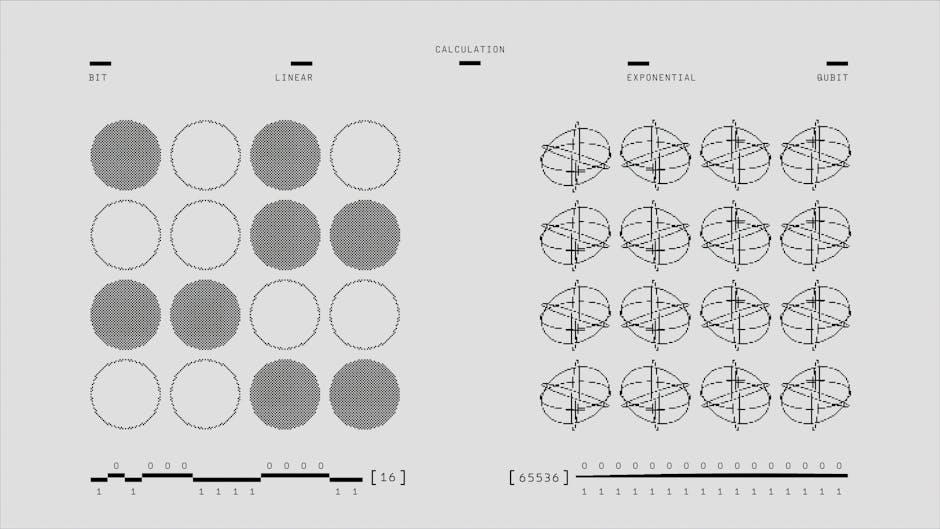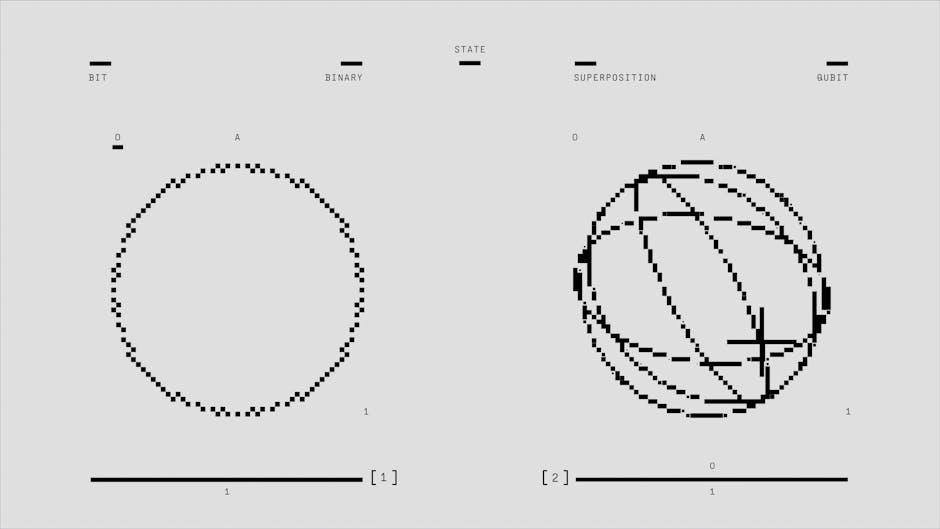In the vast landscape of technological innovation, few frontiers captivate the imagination quite like quantum computing. Promising to revolutionize the way we process information, this enigmatic realm of qubits and superposition challenges the very foundations of classical computing. Yet, behind the complex jargon and intricate mathematics lies a fascinating story — one that holds profound implications for science, industry, and our everyday lives. This article embarks on a journey to unlock the quantum realm, demystifying the core principles and exploring how quantum computing works, all explained clearly for curious minds eager to glimpse the future of computation.
Table of Contents
- Understanding the Fundamentals of Quantum Computing
- Exploring Quantum Algorithms and Their Real-World Applications
- Challenges in Quantum Hardware and How to Overcome Them
- Practical Steps for Integrating Quantum Computing into Your Business Strategy
- Closing Remarks

Understanding the Fundamentals of Quantum Computing
At the heart of this technological marvel lies the qubit, the quantum counterpart to the classical bit. Unlike traditional bits that rest firmly as either 0 or 1, qubits embrace the peculiar nature of quantum mechanics by existing in a superposition of states — simultaneously 0 and 1. This duality empowers quantum computers to process a vast number of possibilities all at once, dramatically accelerating computations for specific problems. Alongside superposition, entanglement acts as a key resource, linking qubits so profoundly that the state of one instantly influences another, no matter the distance separating them.
- Superposition: Enables multiple states at once.
- Entanglement: Creates a deep connection between qubits.
- Quantum Interference: Helps to amplify correct outcomes.
To bring these quantum properties into practical use, quantum algorithms exploit interference patterns, carefully weaving through the maze of probabilities to highlight correct solutions. The technologies supporting quantum computing are delicate; qubits require extreme conditions like ultra-low temperatures and sophisticated error correction methods to preserve coherence. As breakthroughs continue in materials and quantum logic gates, the promise of solving complex problems in cryptography, optimization, and material science inches closer to reality.
| Quantum Concept | Classical Equivalent | Key Feature |
|---|---|---|
| Qubit | Bit | Superposition & Entanglement |
| Quantum Gate | Logic Gate | Manipulates qubits without losing coherence |
| Quantum Algorithm | Classical Algorithm | Explores multiple solutions simultaneously |

Exploring Quantum Algorithms and Their Real-World Applications
Quantum algorithms are revolutionizing how we approach complex problems by leveraging the principles of superposition and entanglement. Unlike classical algorithms that process bits as either 0 or 1, quantum algorithms work with quantum bits, or qubits, which can exist in multiple states simultaneously. This unique capability allows them to perform massive parallel computations, vastly accelerating tasks like cryptography, optimization, and simulation of molecular structures. Some of the most promising quantum algorithms include:
- Shor’s Algorithm: Breaking down large numbers into prime factors, threatening traditional encryption methods.
- Grover’s Algorithm: Searching unsorted databases faster than classical counterparts.
- Quantum Approximate Optimization Algorithm (QAOA): Solving combinatorial optimization problems efficiently.
Real-world applications of quantum algorithms are already beginning to shape industries like pharmaceuticals, finance, and logistics. For instance, by simulating molecular interactions at a quantum level, researchers can identify promising drug candidates far quicker than before. Financial institutions employ quantum algorithms to optimize asset portfolios and detect fraud, while logistics companies use them to refine supply chains under dynamic conditions. Below is a simple comparison of classical versus quantum approaches in key fields:
| Field | Classical Approach | Quantum Advantage |
|---|---|---|
| Drug Discovery | Trial-and-error simulations | Accurate molecular modeling |
| Cryptography | Public-key encryption | Potential to break conventional codes |
| Optimization | Heuristic methods | Faster, near-optimal solutions |

Challenges in Quantum Hardware and How to Overcome Them
Quantum hardware confronts unique challenges that demand both innovative engineering and deep understanding of quantum mechanics. One of the foremost hurdles is qubit stability. Qubits, the fundamental units of quantum computation, are exceptionally sensitive to environmental disturbances such as temperature fluctuations and electromagnetic noise, which cause decoherence and information loss. To combat this, researchers deploy techniques like cryogenic cooling to maintain qubits at near-absolute zero temperatures and utilize error-correction algorithms that actively detect and mitigate noise. These measures transform the fragile quantum state into a more manageable form, inching closer to reliable quantum machines.
Beyond stability, scalability poses a significant roadblock. Current quantum processors contain only tens to hundreds of qubits, but practical applications require thousands or millions. Scaling up involves more than just increasing qubit count; it demands intricate architecture redesigns to ensure qubits can interact properly while minimizing cross-talk and interference. Leveraging technologies such as modular quantum systems and topological qubits can provide pathways forward. The summary below illustrates some strategies and their potential impact on overcoming hardware obstacles:
| Challenge | Strategy | Potential Impact |
|---|---|---|
| Qubit Decoherence | Cryogenic Cooling & Error Correction | Improved Qubit Lifespan & Fidelity |
| Scalability | Modular Architectures & Advanced Qubit Designs | Enhanced System Size and Reliability |
| Cross-Talk | Optimized Circuit Layouts & Shielding | Reduced Interference & Noise |

Practical Steps for Integrating Quantum Computing into Your Business Strategy
To start weaving quantum computing into your business fabric, begin by educating key stakeholders on its potential and limitations. This can be achieved by hosting workshops and inviting quantum experts to demystify the technology. Next, assess your current data infrastructure to identify which operations could benefit from quantum acceleration—such as supply chain optimization, cryptography, or complex simulations. Don’t overlook collaboration: build partnerships with quantum startups or research institutions to stay ahead of technological breakthroughs and gain access to early-stage tools and talent.
After groundwork has been laid, it’s time to experiment with pilot projects. Select a targeted business problem and apply quantum algorithms on simulators before gradually scaling to real quantum hardware. Use agile methodologies to iteratively refine your approach based on results. Align your quantum initiatives with existing digital transformation goals to ensure seamless integration and measurable outcomes. Below is a simple framework that can guide your implementation journey:
| Step | Action | Focus Area |
|---|---|---|
| 1 | Stakeholder Education | Awareness & Understanding |
| 2 | Infrastructure Assessment | Compatibility & Needs |
| 3 | Partner Collaboration | Innovation & Expertise |
| 4 | Pilot Project Execution | Proof of Concept |
| 5 | Integration & Scaling | Business Alignment |
Closing Remarks
As we close the chapter on our journey through the quantum realm, it’s clear that quantum computing is not just a futuristic concept but a rapidly unfolding reality. By peeling back the layers of complexity, we’ve illuminated the core principles that make quantum machines tick—superposition, entanglement, and quantum gates—transforming them from mysterious phenomena into tangible tools. While challenges remain, the promise of quantum computing lies in its potential to solve problems once thought insurmountable. As we stand at the threshold of this new computational era, understanding its foundations is our first step toward unlocking innovations that could reshape science, technology, and beyond. The quantum realm beckons, and now, it’s a little less mysterious for all of us.



